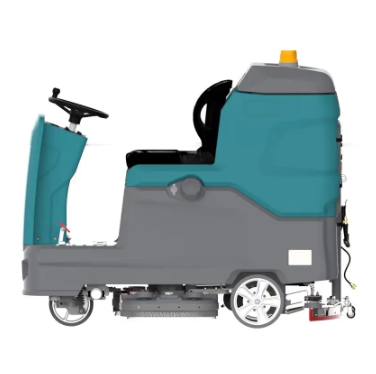What Are Industrial Scrubbers?
Core Components of Industrial Scrubber Systems
Industrial scrubbers are pivotal in removing harmful pollutants from exhaust gases across various industries. Their core components include towers, packing materials, fans, and pumps. Each part is crucial for efficient air filtration and pollutant capture. The towers provide the structure and space where gas and liquid interact, facilitating the cleansing process. Packing materials, composed of various shapes and materials, enhance the surface area for contaminant interaction, thereby increasing scrubber efficiency. The design and type of packing influence the kind of pollutants captured. Fans and pumps are essential in maintaining airflow and liquid distribution, ensuring optimum operation of the scrubber system. These components work in unison to address diverse pollution challenges, underscoring their significance in industrial applications.
Primary Functions in Pollution Control
Industrial scrubbers primarily aim to reduce airborne contaminants, ensuring safer air emissions. They utilize resources like water, chemicals, or electric charges to neutralize pollutants effectively. The scrubbers provide essential pollution control by capturing and converting harmful emissions before they enter the atmosphere. Successfully managing contaminants helps industries meet regulatory standards, safeguarding human health and the environment. The role of scrubbers extends beyond mere compliance — enhancing air quality and reducing the risk of respiratory ailments. Through this process, scrubbers demonstrate their indispensable value in maintaining ecological balance and industrial integrity.
Types of Industrial Scrubbers: Wet, Dry, and Electrostatic
Wet Scrubbers: Water-Based Contaminant Removal
Wet scrubbers play a pivotal role in using liquid to capture contaminants from exhaust gases through absorption. This method is particularly effective in removing acid gases and particulate matter, making them highly beneficial for applications in the chemical and petrochemical industries. Facilities like food production plants and pharmaceuticals also widely use wet scrubbers to enhance air quality. Regular maintenance is crucial for these systems to optimize absorption efficiency and prevent issues like corrosion, which can otherwise compromise their performance over time.
Dry Scrubbers: Chemical Absorption Systems
In contrast to their wet counterparts, dry scrubbers employ solid sorbents to remove pollutants, relying on chemical reactions rather than liquids. This makes them especially effective for dealing with volatile organic compounds (VOCs) and some acid gases. The choice of adsorbents is critical, as it directly impacts the scrubber's effectiveness in any given setting. Each industrial environment requires a tailored approach to pollutant neutralization, highlighting the importance of aligning adsorbent selections with specific pollutant profiles for optimal results. Maintaining these systems involves monitoring and adjusting the chemical compositions to ensure continued efficacy.
Electrostatic Scrubbers: Charged Particle Capture
Electrostatic scrubbers utilize an innovative approach, employing charged plates to attract and capture particulate matter from gas streams. This technology is particularly adept at handling fine particles that often pose challenges for more traditional scrubbers. These systems require regular monitoring and maintenance to sustain performance and efficiency. As industrial emissions continue to evolve, the need for advanced solutions like electrostatic scrubbers becomes evident, ensuring that even the most elusive contaminants are effectively managed. Regular checks help in maintaining the scrubber's performance and ensuring compliance with environmental regulations.
How Industrial Scrubbers Work: A Step-by-Step Breakdown
Contaminated Air Intake and Initial Filtration
The operation of industrial scrubbers begins with the intake of contaminated air through designated inlets. During this initial phase, larger particles are eliminated via preliminary filtration systems. This step is crucial as it prevents potential damage to downstream components and enhances the scrubber's overall efficiency. Studies show that effective initial filtration can reduce the load on the scrubber by up to 50%, significantly extending its operational longevity.
Gas-Liquid Interaction Mechanisms
A critical component of industrial scrubber efficacy is the gas-liquid interaction mechanism. This involves intricate contact between contaminated gas streams and a scrubbing liquid, facilitating the transfer and eventual removal of pollutants. Several scrubber designs, such as counterflow or crossflow layouts, can influence the efficiency of this interaction. The selection of appropriate liquid types and flow rates is vital for maximizing contaminant capture, ensuring that the scrubber operates at peak performance levels.
Pollutant Neutralization and Clean Air Release
Once contaminants are captured within the scrubbing liquid or sorbent, neutralization processes transform harmful substances into less harmful forms. This stage is pivotal in ensuring compliance with stringent environmental regulations. The final step involves the release of purified air, marking the scrubber’s success in pollution abatement. Regular monitoring and maintenance are essential in safeguarding the system's optimal performance, which ultimately contributes to public health protection by minimizing airborne pollutants.
Selecting the Right Industrial Scrubber
Contaminant Type and Particle Size Analysis
Selecting the right industrial scrubber starts with a thorough analysis of the contaminant types and their particle sizes. Different scrubbers are suited for specific pollutant profiles, so identifying the characteristics of the contaminants is crucial to making an informed decision. For instance, some scrubbers are better at capturing gaseous pollutants, while others may excel at trapping fine particulates. Consulting with environmental engineers can provide valuable insights into choosing scrubber systems that are tailored to the specific needs of individual facilities, ensuring optimal performance and regulatory compliance.
Flow Rate and Operational Capacity Requirements
Understanding the required flow rate and operational capacity is essential for selecting appropriately sized scrubber systems. An undersized scrubber system can lead to inefficiencies and increased emissions, ultimately affecting compliance with environmental regulations. Industry guides emphasize the importance of conducting detailed assessments of both current and anticipated flow rates to make well-informed decisions. By prioritizing these evaluations, facilities can minimize operational disruptions and enhance their overall environmental management capabilities.
Compliance with EPA and Clean Air Act Standards
Ensuring compliance with EPA and Clean Air Act standards is critical when choosing an industrial scrubber. Non-compliance can lead to significant fines and operational shutdowns, which underscore the importance of rigorous scrutiny during the selection process. Establishing a compliance checklist as part of industry best practices aids in the careful selection of suitable scrubbers. This proactive approach not only helps facilities avoid legal repercussions but also fosters a sustainable operational environment, aligning with broader environmental goals.
FAQ Section
What are industrial scrubbers used for?
Industrial scrubbers are used to remove harmful pollutants from exhaust gases, ensuring safer air emissions and aiding in pollution control across various industries.
What are the types of industrial scrubbers?
The types of industrial scrubbers include wet scrubbers, dry scrubbers, and electrostatic scrubbers, each utilizing different methods for contaminant removal.
How do wet scrubbers work?
Wet scrubbers use liquid to capture contaminants from exhaust gases through a process of absorption, particularly effective in removing acid gases and particulate matter.
Why is regular maintenance important for industrial scrubbers?
Regular maintenance ensures optimal performance, extends the operational longevity of scrubber systems, and helps prevent issues like corrosion and inefficiency.
 EN
EN
 AR
AR
 FR
FR
 HI
HI
 JA
JA
 KO
KO
 PT
PT
 RU
RU
 ES
ES
 IW
IW
 VI
VI
 TH
TH
 MS
MS

